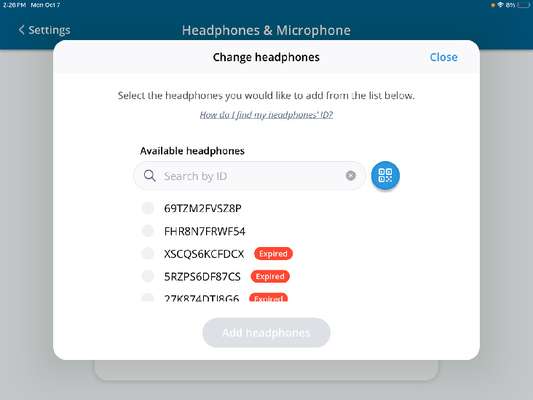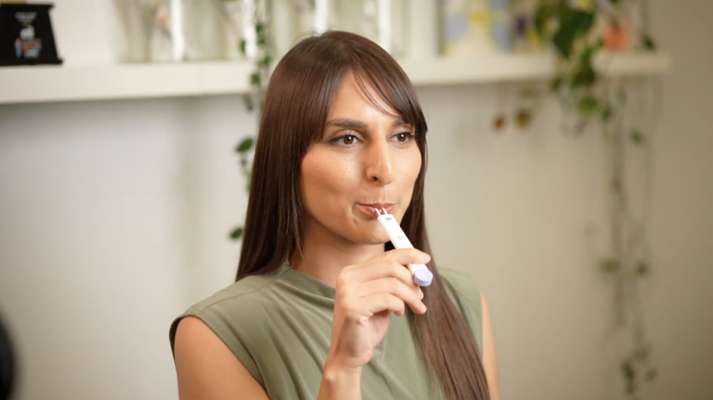Audiometer Calibration Simplified: Tips and Solutions for Precision, Control, and Compliance
Introduction
Accuracy is crucial in audiology. This starts with ensuring that your audiometric equipment is calibrated correctly in order to obtain dependable and consistent results from hearing tests. In this blog post, we will explore the details of audiometer calibration, its importance, and how SHOEBOX provides a convenient turnkey solution to help ensure testing accuracy while minimizing downtime for hearing care providers.
Key Definitions: Understanding the Language of Modern Audiometry
It’s common to encounter confusing terminology when discussing the calibration of an audiometer, especially when adopting new digital tools in audiology. The language used to describe these advancements often reflects current trends and older terms that are still relevant in practice. To help clarify, let’s explore some key definitions that frequently come up in discussions around audiometers and calibration.
-
Computerized Audiometers
When we describe something as “computerized,” it means that a computer is in control of its operations or outputs. In the case of audiometers, this term refers to devices that use computer systems to conduct and analyze hearing tests. As audiology has adopted digital technology, the term “computerized” has become more prevalent, symbolizing a move away from the manual, analog equipment of the past. -
Digital Audiometers
“Digital” in the context of audiometers refers to the use of Digital Signal Processing (DSP) principles. Digital audiometers generate signals in the digital domain before converting them to analog for testing. This digital approach allows for more precise control and enhances the accuracy and flexibility of hearing assessments. While some may use “computerized” and “digital” interchangeably, it’s important to recognize that digital technology specifically involves DSP. -
Electronic Audiometers
“Electronic audiometers” are devices that use electronic circuits and components to measure hearing. This term is sometimes used interchangeably with computerized and digital audiometers. Although less common now, it is still part of the audiology vocabulary, especially when discussing the history of audiometric equipment. -
Microprocessor-Based Audiometers
The term “microprocessor” originated in the early days of digital technology and commonly refers to a computer’s processing unit. In the field of audiometry, early audiometers utilized microprocessor-based technology to automate testing processes. Today, any system running on an automated platform would typically fall under this category, although more modern terminology has largely replaced the use of the term “microprocessor.”
A Brief History of Computerized Audiometers: From Cumbersome Machines to Streamlined Solutions
It’s fascinating to look back at the history of computerized audiometers to understand how audiometry has evolved. Dr. James Hall’s book “An Intro to Audiology Basics” discusses how the development of computerized audiometers helped streamline audiometric testing practices. With the advancement of computers in the mid-20th century, it became clear that they could revolutionize not only medicine but also the field of audiology. The adoption of computerized techniques and tools in audiology was a natural progression due to the potential to improve efficiency and scale patient care.
The first computerized audiometers emerged in the 1970s and 1980s. These early systems were cumbersome, often requiring entire carts to be wheeled around for testing. Even in the early 2000s, audiologists conducting cochlear implant evaluations still used large, unwieldy PCs. However, as computer technology progressed, audiometer design also evolved. The miniaturization of computers has been a game-changer, with devices that once required an entire cart now fitting easily onto a laptop or tablet.
The All-in-One Solution: Precision, Data Security, and Streamlined Calibration

Computerized audiometers offer significant improvements over traditional manual audiometers. They provide greater control over testing parameters through user-friendly digital interfaces, allowing clinicians to adjust a wide range of settings for more flexibility during hearing assessments. For example, a computerized audiometer can automatically analyze a patient’s previous test results and recommend the optimal starting level for the next test frequency. This intelligent automation enhances efficiency and accuracy, ensuring clinicians deliver precise, personalized results tailored to each patient’s needs.
In addition to improving test accuracy, computerized audiometers also simplify data management. In today’s healthcare environment, patient privacy and confidentiality are critical. Computerized systems allow for the secure storage and retrieval of patient data, ensuring compliance with modern privacy standards. For instance, at SHOEBOX, we’ve implemented a double-encrypted portal that helps clinics securely manage patient information in a HIPAA-compliant manner, protecting sensitive data while improving operational efficiency.
Beyond data security and testing precision, computerized audiometers have transformed the calibration process. Previously, calibration required technicians to visit clinics in person, leading to downtime and additional expenses. This method was labor-intensive, particularly for clinics managing multiple devices like audiometers, tympanometers, and sound booths. However, computerized audiometers now simplify calibration by digitally applying correction factors, significantly reducing the risk of human error.
SHOEBOX uses QR codes on calibrated headsets to add an extra layer of security and precision, helping to ensure that only properly calibrated equipment is used. Each newly calibrated headset comes with a unique QR code that must be scanned and uploaded into the system before testing can begin. This feature helps reduce the risk of using incorrectly calibrated equipment by confirming that transducers are matched with the appropriate audiometer settings. This process is particularly beneficial for organizations managing a large fleet of devices. Additionally, SHOEBOX eliminates testing downtime, as customers receive new calibrated headsets before returning old ones, ensuring continuous and reliable testing.
The ANSI S3.7 standard , entirely rewritten in 2016, reflects these technological advancements while still focusing on core acoustic principles. Although the calibration process remains acoustically driven, computerized audiometers allow for greater efficiency. SHOEBOX’s systems, for example, can simultaneously calibrate both left and right transducers, reducing calibration time by up to 90% . This faster turnaround minimizes downtime, allowing clinics to maintain their testing schedules without interruption, ultimately improving patient care and operational efficiency.
Validating and Enhancing Calibration Processes: Ensuring Precision Across the Globe
At SHOEBOX, we place great importance on calibration and conduct thorough internal validation exercises to ensure that our audiometers maintain their precision regardless of their location in the world. We were particularly concerned about how shipping conditions, such as extreme temperature changes, might impact calibration. As SHOEBOX audiometers are now used in over 70 countries, it was crucial to validate their performance under various conditions.
To address these concerns, we initially conducted a series of tests using iPods and later expanded to iPads and laptops. We partnered with FedEx to ship a batch of about five audiometers to some of the most remote locations we could find. These devices remained in these extreme conditions for extended periods—some for over 12 months—before being returned to our Ottawa headquarters for retesting. The results were impressive: despite the rigorous conditions, the audiometers showed minimal frequency drift, consistently staying within the ANSI specification of plus or minus three dB. This manufacturing precision allows us to confidently offer our audiometers worldwide, knowing that they’ll perform reliably regardless of the environment.
Our commitment to accuracy doesn’t stop at internal testing. We’ve also conducted customer-forward trials to ensure that our calibration processes and the accompanying instructions are not just effective but also user-friendly. This ongoing feedback loop helps us refine our calibration certificates and continually improve our training programs, ensuring that every SHOEBOX user, regardless of their technical expertise, can easily access and understand calibration data on their devices. This approach eliminates testing downtime and instills confidence in clinics and with the hearing care providers who depend on our solutions for continuous patient care.
Our state-of-the-art calibration lab in Ottawa is central to maintaining these high standards. The lab is equipped with DD 450 headsets and a binaural fitting methodology, allowing us to test both ears simultaneously. Our advanced setup ensures that all equipment is calibrated with the highest level of accuracy and efficiency.
For new users of our computerized audiometers, the process is not just seamless but also highly efficient. When they receive their equipment, it’s already fully calibrated. As the nine-month mark approaches, we send out reminders that their audiometer will soon be due for recalibration, along with instructions and shipping materials. If a customer is using multiple transducers, such as DD 450s, they can easily return the ones they no longer need. We then send a newly calibrated headset around the 11-month mark, ensuring that the equipment remains in use without interruption. The process is straightforward and efficient, eliminating downtime and allowing clinics to continue testing without delays.
Conclusion: Ensuring Accuracy and Compliance with Audiometer Calibration
As audiometric testing advances with the integration of cutting-edge technology, accurate and efficient calibration is fundamental to this growth. Computerized audiometers have transformed how we conduct hearing tests by offering unparalleled precision, control, and data security. SHOEBOX is at the forefront of this evolution, offering solutions that improve testing accuracy and simplify the calibration process, ensuring that hearing care providers can maintain their schedules without disruption.
From ensuring that our audiometers can withstand extreme conditions across the globe to providing seamless, downtime-free calibration updates, our team at SHOEBOX is dedicated to supporting the needs of modern hearing care providers and their patients.
If you’re interested in learning more about how SHOEBOX can assist you in upholding the highest standards in audiometric testing, we encourage you to continue browsing our website. Additionally, we invite you to explore our free eBooks designed to support your operations:
- For Hearing Care Providers: Download our eBook, Digital Hearing Care: Strategies for Providing Enhanced Patient Care , and discover how to leverage technology to improve patient outcomes and streamline your practice.
- For Professionals Managing Occupational Hearing Testing Programs: Get your free copy of A Guide to Establishing an OSHA-Compliant Occupational Hearing Testing Program, a comprehensive resource to help you create and maintain a compliant and effective hearing conservation program.
The post Audiometer Calibration Simplified: Tips and Solutions for Precision, Control, and Compliance appeared first on Shoebox Ltd. .
Full content in SHOEBOX INC





